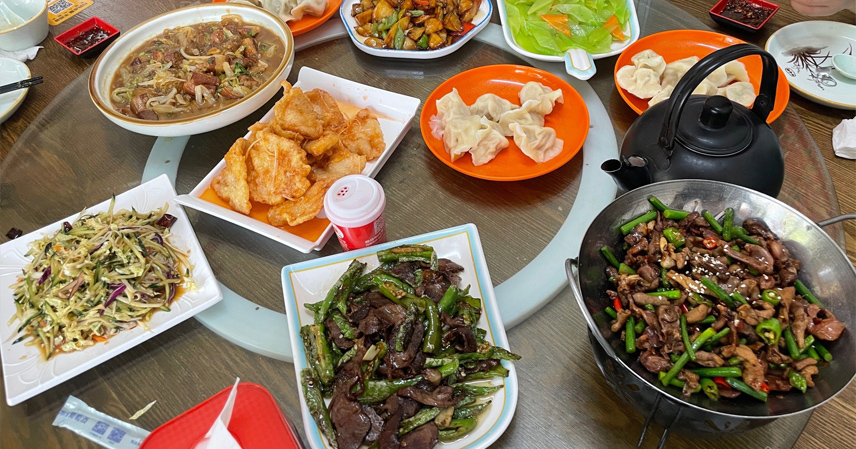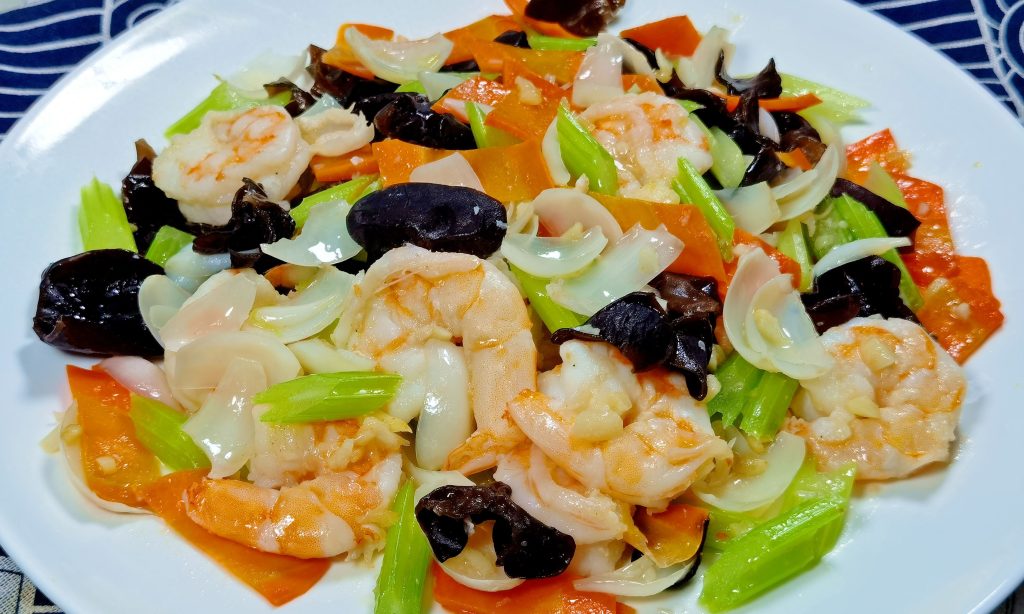When a video titled “Northeasterners Serving a Dish That Still Moves” went viral on Chinese social media, many thought it was just another internet joke—until the clip showed a steaming bowl where a frog’s leg twitched under the heat. The potatoes had melted into creamy softness, while the frog’s skin gleamed gold under the broth. Within seconds, comments flooded in: some shouting “That’s a superfood!”, others begging “Help me!”. It was awkward, yes—almost as freezing as the region’s -30°C winters.
But these dishes, though divisive, tell more than a story of taste—they speak of courage, culture, and the way regional identity simmers in a pot of tradition. Let’s take a trip through five of Northeast China’s most misunderstood delicacies: dishes that locals can’t get enough of, but many outsiders dare not touch.

1. Frog Stew with Potatoes – The “Moving” King of the Table
If any dish could win the title of awkward royalty, it’s this one. In Jilin Province, near the foot of Changbai Mountain, rows of frog farms stretch across the landscape like plastic-covered greenhouses. More than 300 million forest frogs bounce inside, generating over two billion yuan annually. Yet the real shock isn’t the economics—it’s the visuals.
Live frogs are dropped directly into boiling broth, and their valuable fallopian tubes—sold separately at prices rivaling premium liquor—fetch up to 20,000 yuan per kilo. For locals, this is nature’s version of cod-liver oil: high in protein, rich in collagen, believed to boost vitality. As one diner puts it, “Just think of it as a moving vitamin capsule.”
Still, for first-time visitors, the courage to lift that first chopstick depends less on appetite and more on upbringing. In Northeast China, taste buds grow up tough.

2. Crayfish Tofu – A Delicious Deception
At first glance, this dish looks innocent: a bowl of snow-white tofu cubes swaying in a light broth. But one bite reveals the truth—this isn’t tofu at all. It’s made from the finely ground meat of local river crayfish, mashed, seasoned, and reshaped.
Rich in astaxanthin, an antioxidant dozens of times more potent than vitamin E, it’s both healthy and flavorful. Southern tourists often praise its silkiness before the waiter smiles and says, “That’s actually shrimp.” Cue the instant pause—spoons frozen midair, eyes wide.
The chef chuckles: “We just turned seafood into tofu so you don’t have to worry about cleaning shrimp veins.” That’s the charm of Northeastern humor—rough edges hiding gentle intentions. It’s culinary trickery with a wink.

3. The Festival Feast: “Pig Slaughter Dish”
Served during winter festivals, this iconic dish combines blood sausage, sauerkraut, and head meat piled high like a ceremonial altar. Its history dates back to Manchu traditions: after slaughtering a pig, families would first offer thanks to the gods, then share the meat among neighbors.
Today, nearly 70% of restaurants in Shenyang and Changchun serve it during the cold season. To the uninitiated, it can look intimidating—blood sausage? Fermented cabbage? But the moment you take a bite, doubts melt away. The light tang of lactic acid cuts through the fattiness perfectly, and the sausage is so tender it’s almost like tofu pudding.
For many, the first bite is hesitation; the second is revelation. It’s a dish where “heritage cuisine” truly earns its name—not for aesthetics, but for survival through centuries of winter.

4. Raw Veggies with Fermented Soybean Paste – The Salad That Fights Back
This dish has caused more “social death” moments among southern visitors than any other. Imagine a platter of raw cabbage, cucumber, and radish served plain—no dressing, no stir-fry. Locals simply dip them straight into thick, dark soybean paste, fermented for months until the aroma borders on pungent.
Harbin residents consume over five kilograms of this paste annually, and their vegetable intake triples that of southern cities. It sounds like a healthy salad—until your taste buds get hit by the salty, umami explosion.
Researchers at Northeast Agricultural University once half-joked that it’s all about the water: the clean tributaries of the Songhua River make these vegetables safe to eat raw. Scientifically, raw veggies retain more vitamin C—but emotionally, outsiders still struggle to open their mouths. It’s a gastronomic handshake between north and south, where each side politely wonders how the other survives.

5. Deep-Fried Silkworm Pupae – The Alien of the Night Market
Among all “awkward foods,” silkworm pupae easily take the visual prize. With a tough brown shell and tiny wing buds, they resemble miniature alien ships. Yet behind that intimidating look lies a powerhouse of nutrition: 60% protein, eight essential amino acids, and booming sales of over 500 tons a year.
In Yanbian’s bustling night markets, vendors stir giant woks as golden pupae sizzle and pop. The air fills with nutty aroma while curious tourists circle at a safe distance, phones out, faces tense. Locals? They grab bamboo skewers, pop one into their mouths, and bite through with a satisfying crunch—“crack!”—as savory juices burst out.
Many first-timers flinch, but the taste often wins them over. With sales rising 30% annually, it seems bravery does pay off—both culturally and economically.
From “Awkward” to Authentic: The Taste of Real Northeast China
Awkward as they may seem, the numbers don’t lie. Five years ago, only 25% of southern Chinese tourists dared try these “heavy-taste” dishes; today, that number has grown to 40%. The hashtag #AwkwardNortheastCuisine has surpassed 200 million views online, with comment sections alternating between “Delicious!” and “Help me!”.
Interestingly, these online jokes have breathed new life into traditional foods. Netizens now nickname Frog Stew “The Changbai Mountain Pool Party” and Pig Slaughter Dish “The Manchu Brunch.” Humor, it turns out, has become the best seasoning.
What defines Northeastern cuisine isn’t glamour—it’s honesty. Ingredients come straight from the land, recipes skip the pretension, and flavors speak plainly. The so-called awkwardness is simply authenticity in its rawest form: unfiltered, unapologetic, and full of warmth.
As an old restaurant slogan in Harbin says, “If you think it looks ugly, don’t eat it. But if you do eat it, don’t complain.” That line might be rough—but also irresistibly true.
A Final Bite
So next time you’re at a Northeastern banquet and the dishes seem intimidating—frogs that twitch, shrimp disguised as tofu, pork feasts with “ritual” vibes, raw veggies in black paste, or alien-like pupae—pause before you post that “SOS” photo. Take one bite. Chew for three seconds.
You might just taste more than food—you might taste the meeting point of two worlds: where wind, ice, and sunlight shape not just landscapes, but palates. That brief mix of fear and curiosity? That’s the sound of China’s culinary map quietly folding into itself.
References
- Data from local agricultural reports and regional tourism statistics (Changbai Mountain, Harbin, Yanbian).
- Cultural background cross-referenced with Northeastern cuisine studies and social media trends (Weibo, Douyin).



